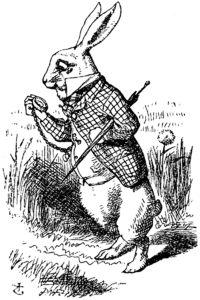“Why I thought you would never ask,” exclaimed Ralla with a
glaring smile on his face. “You see, deception can be quite a powerful tool.
And when used only for the greater good of humanity it is permissible.”
“You mean that you tricked someone into carrying out a work
for you, Grandpa?” asked Kuroff.
“Well, you see, [we] hermits were for some time ravaged by
the Rakshasa. They we were a sinister breed who, for joy, terrorized the people
of the Dandaka forest. Ever since the Rakshasa occupied our grounds, all things
tied to mother earth – game, foliage and the like-- died, migrated away or was
eaten.”
“Grandpa, what does a Rakshasa look like?” questioned
Danzell.
“They are a hideous people. They have wings for flight,
claws for battle and fangs for preying on just about whomever they please,”
responded Ralla.
“Now, like I was saying, the Rakshasa were a menace to our
existence. We hermits had no way of combatting them and their malicious
attacks,” said Ralla. “We in Dandaka had heard of a great warrior who hailed
from great Aydohya – Rama was his name.”
“What did Rama look like, Grandpa?” asked Kuroff.
Ralla grinned. He said, “As broad as two mature ox. Hair as
dark as the fur of a black bear. As tall as the three of us stacked one atop
the other.”
“Whoa!” shouted Kuroff.
“As I was saying, we knew that Rama had previously defeated
several Rakshasa with only his bow. We also knew that a warrior of his
greatness wouldn’t waste his time venturing into Dandaka unless he had to,”
exclaimed Ralla. “So when we heard that he was in the vicinity, we devised an
attempt to bring him to our modest Dandaka.”
“We knew that Agastya, being a demon-slayer himself, would
likely know the great Rama personally. You see, men [Rama and Agastya] of such
character demand respect from all men they encounter. As such, we sent Agastya
out for a day in order to repay a former favor. We quickly sent a hermit over
to Agastya’s abode to pose as Agastya himself.”
“Grandpa, you committed an immoral act!” shouted Danzel and
Kuroff.
“Yes, but only for the greater good – as I’ve already
mentioned,” stressed Ralla.
“Luckily, the hermit was quite the impressionist and carried
out the plan to perfection. He directed Rama and his entourage to Dandaka to help
out us hermits.”
“You see, a warrior of his character was obligated to help
out laymen like us.”
“But Grandpa, why couldn’t you just have asked Agastya to
help you?” inquired Danzel.
Ralla chuckled. “Only a few men in this world could
accomplish the feat Rama did,” said Ralla, “thousands of Rakshasa would engage
in battle once they heard who was in their territory.”
“The Rakshasa, seething at the opportunity to fight, showed
up before sundown.”
“Rama, noble as he was, ordered his entourage to seek protection.
The night sky crackled with thunder as the Rakshasa set out for northern
Dandaka.”
“What happened next, what happened next?” squealed the boys.
“I bet that Rama destroyed them with a single blow,” cried Kuroff as he
demonstrated the fighting moves he’d envisioned.
“As soon as the Rakshasa spotted Rama they bee-lined right
towards him,” explained Ralla. “Rama, being the seasoned warrior he was, darted
to his side so as to line the Rakshasa up one after the other. He drew his bow
back as far as the string allowed and fired an arrow – piercing the hearts of a
dozen nearly instantaneously.”
Kuroff and Danzel, thrilled by the story, drew and aimed
their imaginary bows and fired them into the sky.
“Rama burned through his arrows in nearly no time; he then drew
his seasoned blade and jumped tree limb to tree limb slicing through the
Rakshasas as they zipped through the trees like angry hornets,” said Ralla.
“Rama would not be defeated, no. He single-handedly
dismantled the Rakshasa army headed by Khara.”
“You were present to witness ALL of this?” asked Danzel.
“Why yes,” proclaimed Ralla.
“Our plan to purge the Rakshasas from Dandaka had worked to
perfection it did.”
“Gradually, the beasts of the field and plants of the ground
found their way back to graceful Dandaka.”
Kuroff and Danzel imitated the battle with imaginary weapons
on the banks of the Ganges.
“Has ANYTHING else happened to you that we should know
about?” asked Kuroff.
“Let us first make our way back home and I’ll see what I can
do,” remarked Ralla.
Author’s note: I told this story in third person in order to
maintain the style for my storybook. The purpose of the storybook is to
describe some of the more notable landmarks mentioned in the Ramayana. For this
story in particular, I hoped to continue telling stories as the grandfather of
the two boys, Danzel and Kuroff. I did change the way in which Rama ended up in
the Dandaka forest – my story entailed a hermit posing as Agastya.
Bibliography: Buck, William (1976). Ramayana: King
Rama's Way.















